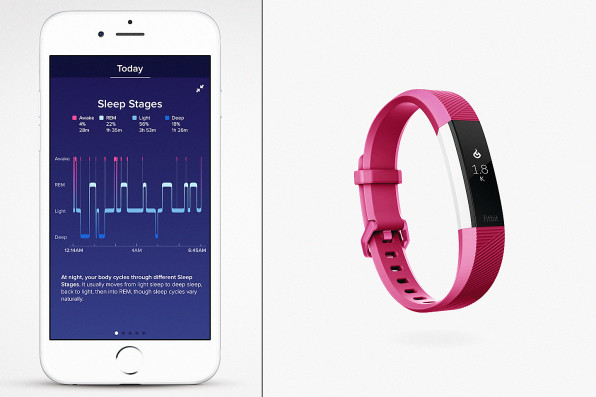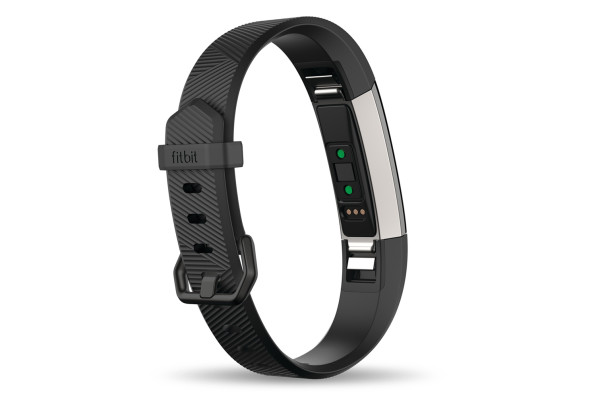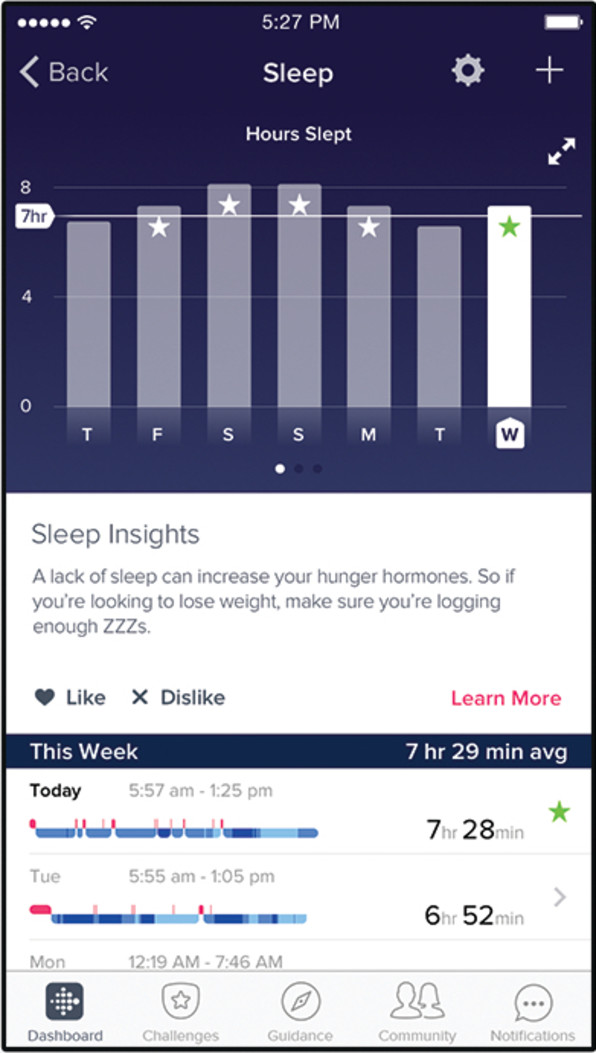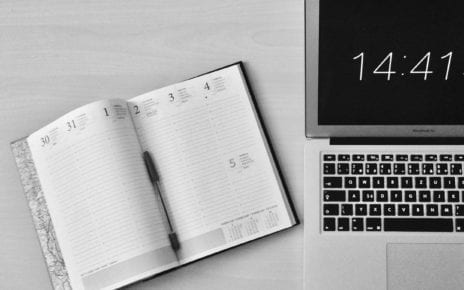This article was sourced from Fast Company. Article by Sean Captain.
If you’re nodding off while reading this, it might not be because of my writing. You may not have had enough sleep—either the overall duration or the right mix of light, deep, and REM (rapid eye movement) sleep. Lots of fitness trackers measure the duration of slumber and periods of restlessness, using accelerometers to register movement. Now Fitbit says it can break sleep down by stage using the optical heart rate monitor in some of its fitness bands to measure slight fluctuations. The capability, called Sleep Stages, debuts in Fitbit’s slim new Alta HR band (available in April, starting at $150) and through a software update for its current Blaze and Charge 2 bands.
“Fitbit was a way to really address a broad consumer need,” says Conor Heneghan, the company’s director of research. An entrepreneur and former professor at University College Dublin, Heneghan joined Fitbit two years ago with the goal of bringing some of the capabilities of a sleep lab to a consumer device that people could wear all the time, not just when wired up for study.
The Alta HR is a subtle upgrade to the original Alta (introduced in 2016) that adds continuous heart-rate monitoring—the most-requested feature, according to Fitbit. The optical sensor lays almost flush on the underside of the band, unlike the prominent bump under the larger Charge 2, which sometimes presses a slight dent into my wrist. I got to wear the new Alta HR for just a few minutes, but it felt less likely to do that.

The new band comes in 10 styles ranging from basic black to 22-karat rose gold. Four colors are available in the floppy, entry-level elastomer bands. I found the leather bands, in three colors for $60 extra, a bit more comfortable. The top Alta HR model costs $250 and is mounted in a stainless-steel bracelet. (Bands are interchangeable, so you can always upgrade.)
INACTIVITY TRACKER
With the Alta HR, Fitbit is upping the value of heart-rate monitoring to include sophisticated sleep tracking. Fitbit isn’t the first company to claim the ability to distinguish sleep stages. Intel’s now-defunct Basis brand used an optical heart-rate monitor in its Basis Peak model back in 2014 to do something similar. Rival Jawbone began distinguishing sleep stages in 2015 with skin sensors in its Up3 band that measure factors including heart rate, respiration rate, and body temperature.
Colin Espie, a professor of sleep medicine and the University of Oxford (who isn’t affiliated with Fitbit), hasn’t been impressed with any of these past attempts. “In short I haven’t seen a wearable that accurately measures sleep architecture (stages of sleep),” he told me in an email.
Regardless of what came before, Fitbit’s entry into sleep-stage tracking could have a big effect on raising awareness. Fitbit is the Kleenex of fitness trackers, the dominant brand with over 20% market share among all wearable devices, according to IDC. It’s bringing sleep-stage tracking not only to a new product but to existing ones, including its biggest-selling model, the Charge 2, which tops several reviewers’ lists of best fitness trackers.
Fitbit is also bringing another feature, called Sleep Insights, to all seven of its devices that track the duration of sleep. Insights are simple tips, based on data people’s devices collect, to help them get better sleep. An example, provided by Fitbit:
There seems to be a strong correlation between your sleep and your runs. The last 10 weeknight logs show that you had 20 mins more restful sleep on days you ran vs. days you didn’t.
With Stages and Insights, Fitbit is making the case that fitness depends not just on being active, but on relaxing. “We’re beginning to understand that sleep is as important to health as diet and exercise,” says Dr. Nathaniel Watson, a University of Washington professor and president of the American Academy of Sleep Medicine, who is also not affiliated with Fitbit. “These consumer sleep technologies, I think, are playing a role in getting people to understand that.”
It’s about time. More than a third of Americans don’t get enough sleep, according to U.S. government research, and the resulting tiredness trims $411 billion worth of productivity off the U.S. economy every year, according to research by the Rand Corporation. (It’s not just America: Japan loses $138 billion due to sleepiness.) The list of possible ailments caused by poor sleep is long and troubling, including hypertension, diabetes, depression, obesity, and even cancer. We are stealing time not only from slumber but from longevity.
THE HEART OF SLEEP
Can Fitbit’s new technology really judge sleep stage accurately and provide enough insight to help users get healthy? Sleep science experts from the University of Arizona, Johns Hopkins University, and Stanford University consulted on the development of Sleep Stages, and Heneghan has a good track record in the field. But they won’t present their research until the SLEEP 2017 conference in Boston in June. “Even where companies try to get the edge on their competitors by publishing studies they have undertaken, most of these studies don’t even get published in the first place because they are not of good enough scientific quality, and are rejected by journals,” says Espie. (He is also CMO of Big Health, a company that provides online sleep quality assessment and guidance.)
The updated Fitbit app for Android, iOS, and Windows—which the company says will be available in the spring—wasn’t ready for me to try. With neither published findings nor anecdotal experience, I could ask outside experts only if a fitness band’s optical heart-rate monitor, with help from its accelerometer, would be enough to distinguish sleep stages accurately. In principle it would be, says Watson.

The conventional way to measure sleep stages would involve a trip to a sleep lab and wiring the patient up to a number of devices, most notably an electroencephalogram (EEG). Wakefulness and the different stages of sleep, as well as transitions between them all, have distinctive brainwave patterns that the EEG can measure. For instance, the transition from light to deep sleep (called N3) is marked by the appearance of high-voltage, low-frequency delta brainwaves. Newer research shows that cardiovascular changes provide similar signals. Deep sleep is also marked by minimal heart rate and blood pressure, for instance. A 2013 paper by researchers in Austria, Brazil, and the Czech Republic pulls together studies in the field to show these parallels between brain wave and cardiovascular signals.
It’s plausible that sleep can be assessed using heart rate variability, says Watson. Sleep involves interplay of control by the body’s fight-or-flight (sympathetic) and resting (parasympathetic) nervous systems. And the role of each varies with sleep stage. This interplay also affects heart-rate variability. “It makes sense from those perspectives,” Watson says. “The only obvious concern is, you have to prove it.”
Fitbit’s Heneghan says that the company has done that. Fitbit did two years of research and development on Sleep Stages. It recorded people sleeping for hundreds of nights outfitted with both Fitbit’s heart-rate sensor and sleep-lab gear like EEGs and devices that measure blood oxygen levels, muscle activity, and heart rate. Fitbit used machine learning technology to distinguish patterns in heart-rate variability (HRV) from the sensor that correspond to changes in sleep stage as measured by the full suite of sleep lab devices.
This is familiar territory for Heneghan, who cofounded a company, BiancaMed, that measures respiration rate to monitor sleep. Stanford professor Allison Siebern, who consulted with Fitbit, has used optical heart rate sensors in her research.

Sleep Stages is based on the variability of heart rate: how steady it is over time. Heneghan sketched out a rough example for someone with an average resting heart rate of 60 beats per minute. “In deep sleep, you’re maybe going to see plus/minus four beats-per-minute variation over a few minutes, so it’s really pretty regular,” he says. “When a person is in dreaming or REM sleep, I’d expect to see much more like plus/minus 10 or 15 beats per minute.”
Espie isn’t fully convinced about the value of measuring heart rate and heart-rate variability. “There is some evidence in the literature that this may be done scientifically,” he says. “But it’s not a well-developed procedure, it’s not a substitute for measuring [in a sleep lab].” (Fitbit doesn’t claim that Sleep Stages matches what a lab can do.)
Angela McIntyre, who tracks wearable technologies at market research firm Gartner, is skeptical about how accurate a fitness band can be. Chest-strap monitors are good at measuring heart-rate variability, she says. They produce those pointy up-and-down lines seen on a hospital monitor. “The kind of data that’s being measured from your wrists—the peaks aren’t so sharp,” says McIntyre. “They’re kind of rounded, so it takes a lot of calculating to figure out where is the right peak.”
THE STAGES OF SNOOZING
Sleep is about more than quantity. A person doesn’t need just seven or eight hours of sleep, but the right mixture of sleep types. Deep Sleep (stage N3) promotes the immune system and muscle growth, for instance; and should make up 10-25 percent of sleep time. REM sleep helps memories form and should be around 20-25 of sack time.

With devices that support Sleep Stages, the updated Fitbit app will show a breakdown of the different sleep types: how they are distributed over the night, the total amount of each type, and how those totals compare to averages among people of the same age and gender. Assuming Fitbit gets the numbers right, how helpful will that information be? “Sleep staging and the amount of different stages that you get is something that’s hard for an individual to necessarily influence,” says Watson.
Fitbit says that it will make the data it collects more useful by translating it into tailor-made Sleep Insights for each user. This feature was also not available for me to try, so I can only go on a few examples the company provided, such as:
You slept an average of 9hrs 30min this weekend, which is substantially higher than your weekday sleep duration of 5hrs 40min. That swing may be a sign that you’re not getting enough sleep during the week.
It’s no shocker that people who don’t get enough sleep during the workweek might be prone to binge on the weekend. The exact numbers do bring home the magnitude of the problem. However this tip–and other examples that Fitbit shared with me–don’t show how, say, a deficit of REM sleep vs. light sleep would influence the insights.
Overall, it’s good to get people thinking more about sleep, says Watson. If they see it as a key part of health, people can make lifestyle changes to foster a healthy sleep environment. But he warns of the risk in overthinking it. “Sleep is what happens when the mind goes clear at night,” he says. “If you’re constantly trying to hack your sleep, you may ultimately be having the opposite effect.”




